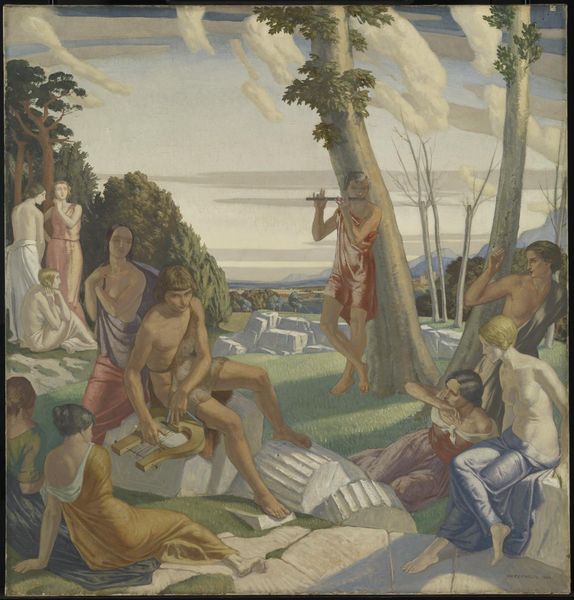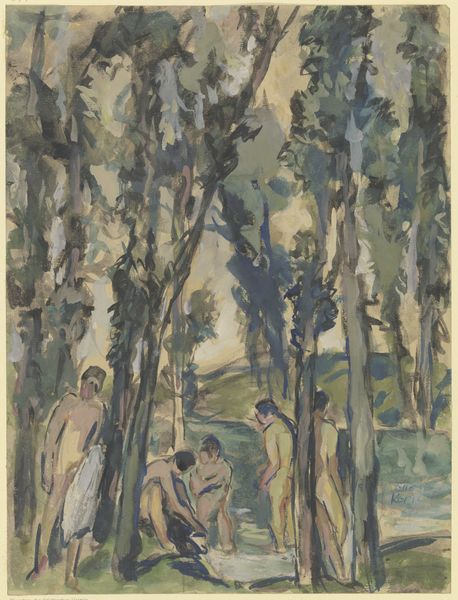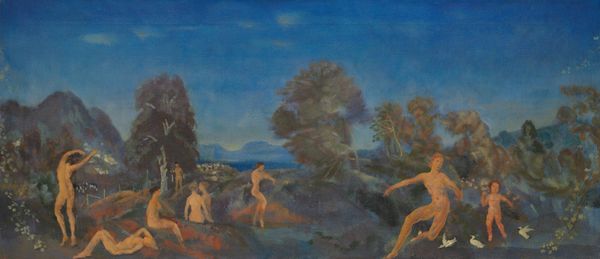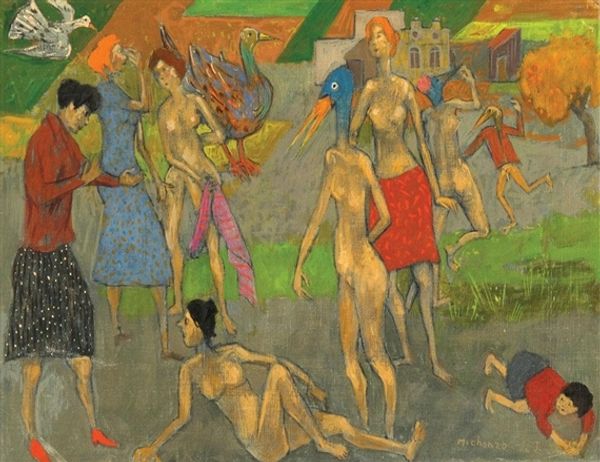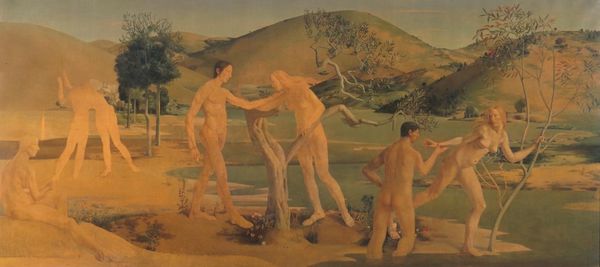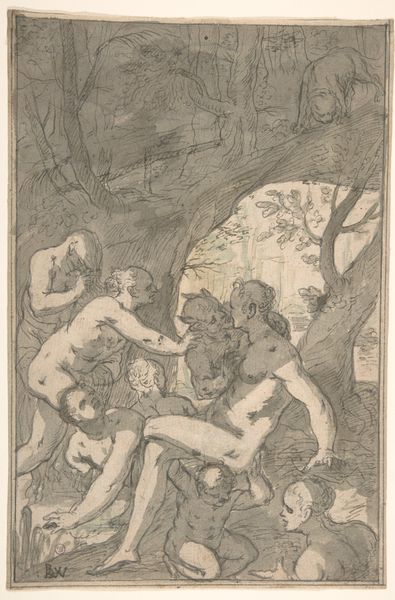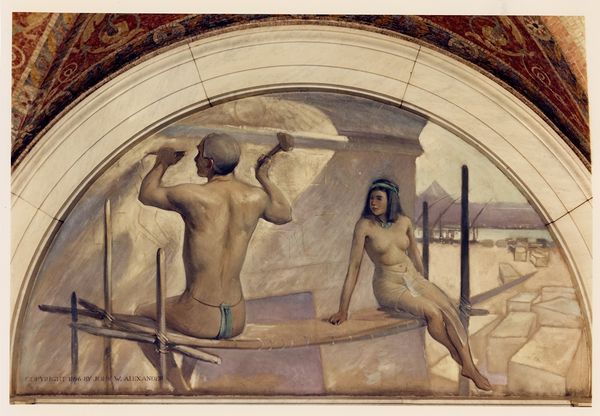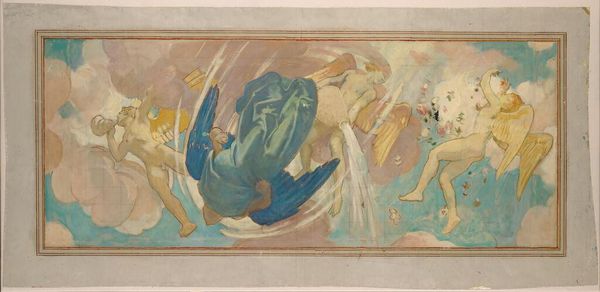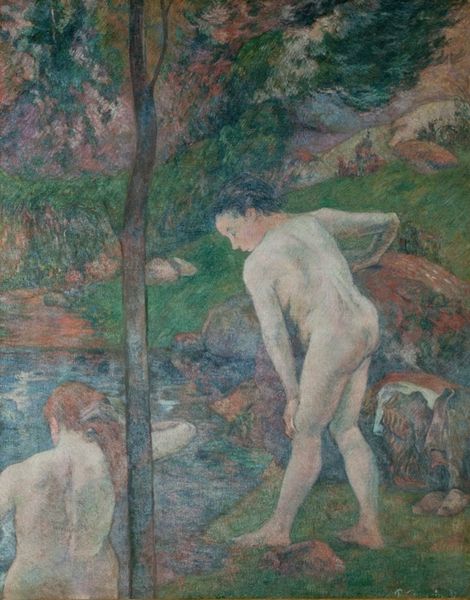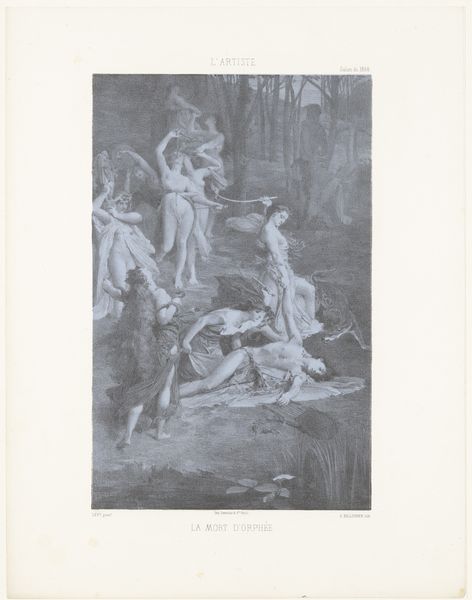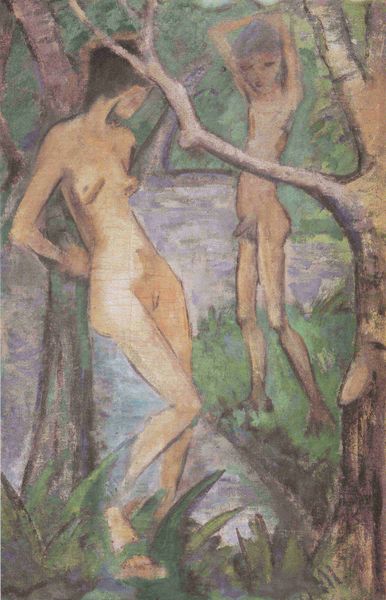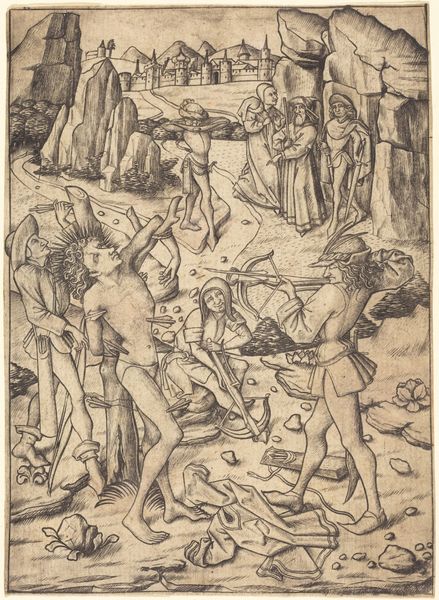
Dimensions: support: 515 x 427 mm frame: 630 x 540 x 65 mm
Copyright: © The estate of Mary Adshead | CC-BY-NC-ND 4.0 DEED, Photo: Tate
Editor: Here we have Mary Adshead’s "Morning after the Flood", currently housed at the Tate. I’m struck by the figures and animals; they feel both classical and unsettling. How do you interpret this work within its historical context? Curator: It's interesting you say unsettling. The work likely alludes to the biblical narrative of Noah's Ark, but Adshead presents a post-cataclysmic world ripe for reconstruction. The presence of kangaroos, for example, disrupts expectations, gesturing towards the British Empire and its global reach. Editor: So, it’s not just a simple retelling of the flood story? Curator: Not at all! Adshead, working in the interwar period, uses this imagery to explore themes of rebuilding, social order, and perhaps even a commentary on the shifting geopolitical landscape of the time. How does that awareness change your initial reading? Editor: I see it now; the painting feels less like a quaint scene and more like a reflection on societal anxieties and imperial power. Thanks for illuminating that context! Curator: Indeed, considering art's role in shaping public consciousness is crucial. It's been a thought-provoking discussion!
Comments
tate 6 months ago
⋮
http://www.tate.org.uk/art/artworks/adshead-morning-after-the-flood-t07228
Join the conversation
Join millions of artists and users on Artera today and experience the ultimate creative platform.
tate 6 months ago
⋮
Adshead included Morning after the Flood in her first solo show at the Goupil Gallery, London in 1930. It is typical of the style of 'decorative painting' that was taught at the Slade School of Art, which Adshead attended from 1921 to 1924 under Professor Henry Tonks. The Slade School tutors regularly set figure compositions for their students, in which the prescribed subject matter was taken from the Bible, and Adshead kept to that practice in this work. The painting depicts the day following the subsidence of the biblical Flood, when Noah's Ark came to rest on dry land. In the small catalogue which accompanied her 1986 show at Sally Hunter Fine Art, Noel Carrington wrote of Adshead's 'sense of design, wit and joie de vivre'. These qualities are evident in this work, particularly in the inclusion of the elephant, camel and kangaroo. Adshead's son Sylvester Bone called Morning after the Flood 'the most mysterious picture of [Adshead's] that I know' (letter to Tate Gallery, 30 June 1997).
